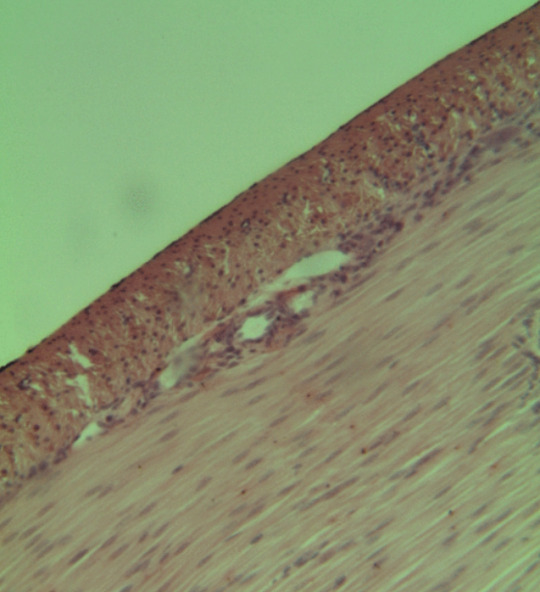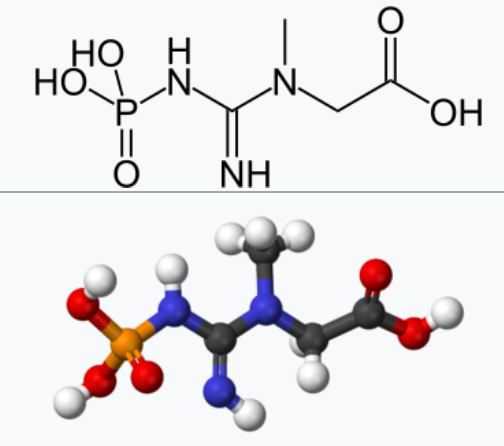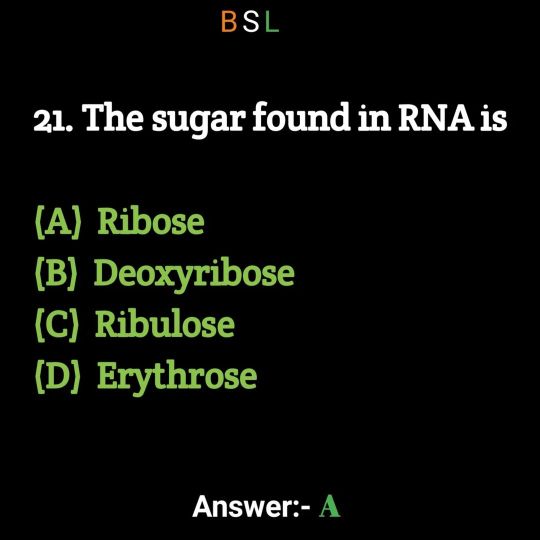#cell biology and biochemistry
Text
🔬🌀Demystifying the Krebs Cycle: A Deep Dive into Cellular Respiration! 🌀🔬
Prepare for a thrilling journey into the heart of cellular metabolism! 🌟✨ Today, we unravel the intricacies of the Krebs Cycle, also known as the Citric Acid Cycle or Tricarboxylic Acid Cycle, a cornerstone of energy production in our cells. 💡🤯
The Krebs Cycle: Named after its discoverer, Sir Hans Krebs, this metabolic pathway occurs within the mitochondria and is a central hub in cellular respiration.
🔍Step 1: Acetyl-CoA Entry
Acetyl-CoA, derived from the breakdown of glucose or fatty acids, enters the cycle.
It combines with oxaloacetate to form citrate, a six-carbon compound.
🔍Step 2: Isocitrate Formation
A rearrangement converts citrate into isocitrate.
The enzyme aconitase facilitates this transformation.
🔍Step 3: Alpha-Ketoglutarate Production
Isocitrate undergoes oxidative decarboxylation, shedding a CO2 molecule and yielding alpha-ketoglutarate.
NAD+ is reduced to NADH in this step.
🔍Step 4: Succinyl-CoA Synthesis
Alpha-ketoglutarate loses CO2 and acquires a CoA group to form succinyl-CoA.
Another NAD+ is reduced to NADH.
This step is catalyzed by alpha-ketoglutarate dehydrogenase.
🔍Step 5: Succinate Formation
Succinyl-CoA releases CoA, becoming succinate.
A molecule of GTP (guanosine triphosphate) is generated as a high-energy phosphate bond.
Succinate dehydrogenase is pivotal, transferring electrons to the electron transport chain (ETC).
🔍Step 6: Fumarate Generation
Succinate is oxidized to fumarate with the help of the enzyme succinate dehydrogenase.
FADH2 (flavin adenine dinucleotide) is formed and transfers electrons to the ETC.
🔍Step 7: Malate Formation
Fumarate undergoes hydration to form malate, catalyzed by fumarase.
🔍Step 8: Regeneration of Oxaloacetate
Malate is oxidized back to oxaloacetate.
NAD+ is reduced to NADH.
Oxaloacetate is ready to initiate another round of the Krebs Cycle.
The Krebs Cycle - an intricate dance of chemical transformations fueling the cellular machinery of life. 🕺💃 Dive deeper into cellular respiration, where molecules tango to generate ATP, our cellular energy currency!

📚References for In-Depth Exploration📚
Berg, J. M., Tymoczko, J. L., & Stryer, L. (2002). Biochemistry (5th ed.). W. H. Freeman. Chapter 17.
Voet, D., Voet, J. G., & Pratt, C. W. (2008). Fundamentals of Biochemistry (3rd ed.). John Wiley & Sons. Chapter 17.
Lehninger, A. L., Nelson, D. L., & Cox, M. M. (2008). Lehninger Principles of Biochemistry (5th ed.). W. H. Freeman. Chapter 17.
#science#biology#college#education#school#student#medicine#doctors#health#healthcare#biochemistry#cell#science nerds
114 notes
·
View notes
Text





#my job is culturing animal cells so i kinda have to vote that way...#but im curious how many people will be in the prokaryotic gang#science#stem#science side of tumblr#stemblr#biology#biochemistry#polls#cells#plant cells#animal cells#bacteria
101 notes
·
View notes
Text
Biology poll
If you could squish (softly or until membrane rupture, up to you ) any of the sub cellular components which one would you squish ?
38 notes
·
View notes
Text

Inside Droplets
Phase separation – two distinct phases separating from a mixture, as vinegar and oil will from an undisturbed salad dressing – into droplets plays a role in the biochemical dynamics and signals within cells. This study uses computer modelling to understand the interaction of networks of the cell's structural protein actin with droplets of the actin binding protein VASP influences cytoskeletal architecture
Read the published research article here
Image from work by Aravind Chandrasekaran and colleagues
Department of Mechanical and Aerospace Engineering, University of California San Diego, La Jolla, CA, USA
Image originally published with a Creative Commons Attribution 4.0 International (CC BY 4.0)
Published in Nature Communications, April 2024
You can also follow BPoD on Instagram, Twitter and Facebook
10 notes
·
View notes
Text
Development of Cancer

Patreon
#studyblr#notes#my notes#medblr#cell biology#eukaryotes#eukaryotic cells#eukaryotic cell biology#cell biology notes#cell bio#cell bio notes#cytology#cytology notes#cell chemistry#cell biochemistry#eukaryotic cytology#cell functions#functions of cells#eukaryotes notes#study of cells#cell basics#science#scienceblr#life science#health science#cancer#cancer biology
9 notes
·
View notes
Text

A Cell in biology is the structural and functional unit of life that contains fundamental molecules of living organisms. The main functions of cells and cell organelles are replication, protein synthesis, motility, and transferring genetic materials such as deoxyribonucleic acid (DNA) and ribonucleic acid (RNA). For more about cell in biology
3 notes
·
View notes
Text
Watch me catch up with 4 semesters material
#biochemistry is pretty interesting but im just on Cell Biology 🧫 so i guess the hard stuff is further down the road#random#i have applied for study centre change to another college bcs the one i chose before didn't had biochem lab or faculty so like why was it an#option#but i applied for the change and it will be effective within a week im sure#until then i have to prepare ALL the damn assignments and ask to cover the lab work of all 4 sems its gonna be tough but so am i#i am out of assignment papers and do not have the guts to ask my father to get me some bcs 1. he's busy 2. the market is far away#3. why didnt i tell him to bring some papers from office on Friday#but I'll still try and ask him to see what he says#if i don't have assignment papers I'll just Study and understand concepts (hell it takes so much time but theyre easy and fun)#the reason its taking longer to understand stuff is because its the first time im hearing any of that#I'll keep random posting lmfao and subject you to the insanity i go thru
14 notes
·
View notes
Text
Plants produce a smell when damaged. Other plants can detect these signals to put on their own defenses.
Plants can produce chemicals that harm herbivores or attract predators.
Caterpillars were placed on leaves cut from tomato plants Arabidopsis thaliana. The plants were genetically altered so their cells contained a biosensor that fluoresced green when an influx of calcium ions was detected. Calcium is used for communication in plant and animal cells.
Plants perceive volatile organic compounds (VOCs) released by mechanically- or herbivore-damaged neighboring plants and induce various defense responses. Such interplant communication protects plants from environmental threats.
Plant-plant communication occurs when undamaged receivers induce resistance in response to a cue from a damaged neighbor, the emitter.
There are two hypothesis one it allows the plants neighbors to be prepared for a herbivore attack. Or have all the plants produce chemicals to hurt the predators.
2 notes
·
View notes
Text
Ribosomes, mRNA and tRNA watching the protein they have lovingly and carefully synthetized 5 seconds ago get wrecked by a rogue oxygen ion and then immediately carried away to a proteosome to be fucking shredded to bits.

33 notes
·
View notes
Text
on one hand i guess its good that most of my classes this semester are based in similar concepts because stuff i learn in one class might help me out in others but on the other hand. organic chemistry was the class i struggled most with so far and now i basically have a semester of nothing but organic chemistry so i guess this is either the semester where i finally grasp everything and start to love it or the one i completely bomb
#going to think positively though and really try to put my all into it#but yeah cell biology? surprise its actually ochem! physiology? surprise its ochem! biochemistry? whoops thats a weird way to spell ochem
3 notes
·
View notes
Text
Propaganda!


Smooth muscle is an involuntary non-striated muscle, so-called because it has no sarcomeres and therefore no striations. Smooth muscle is found in the walls of hollow organs, including the stomach, intestines, bladder and uterus.
Phosphocreatine, also known as creatine phosphate, is a phosphorylated form of creatine that serves as a rapidly mobilizable reserve of high-energy phosphates in skeletal muscle, myocardium and the brain to recycle adenosine triphosphate, the energy currency of the cell.
#tournament poll#polls#wikipedia#cells of the human body#science tournament#image description in alt#smooth muscle#phosphocreatine#biochemistry#cell biology
4 notes
·
View notes
Text
Maintaining a great level of metabolic activity is important because it helps your temperature regulation. So, if you get very easily cold or hot, or if you find it hard to tolerate the cold or heat of your climate, your metabolism is a key part of the equation!!
#txt#biochemistry#cell biology#holistic health#holistic healing#self healing#metabolism#fitness#healthy eating#true nourishment#circulation#heart expansive#herbalism
4 notes
·
View notes
Photo

Carbohydrates MCQ 21 Link in bio ☝️ for more mcqs recommendations #csirnet #csir #neet #biology #gate #lifescience #chemistry #ugcnet #microbiology #science #biotechnology #csirnetlifesciences #biochemistry #botany #cellbiology #medical #cell #india #iitjam #genetics #csirnetpreparation #net #organicchemistry #ifasbestcsirnet #ifas #molecularbiology #targetgate #targetcsirjrf #zoology #plan (at Royal City Nanded) https://www.instagram.com/p/CpjYKF1vlCj/?igshid=NGJjMDIxMWI=
#csirnet#csir#neet#biology#gate#lifescience#chemistry#ugcnet#microbiology#science#biotechnology#csirnetlifesciences#biochemistry#botany#cellbiology#medical#cell#india#iitjam#genetics#csirnetpreparation#net#organicchemistry#ifasbestcsirnet#ifas#molecularbiology#targetgate#targetcsirjrf#zoology#plan
2 notes
·
View notes
Text
Engineering proteins to treat cancer
New Post has been published on https://thedigitalinsider.com/engineering-proteins-to-treat-cancer/
Engineering proteins to treat cancer


Like many children of first-generation immigrants, Oscar Molina grew up feeling like he had two career choices: doctor or lawyer. He seemed destined for the former as he excelled in high school and planned to major in biochemistry at the University of California at Los Angeles, but as an undergraduate, he fell in love with research.
“I was fascinated by discovery. As I did it more in college, I realized I didn’t want to be a doctor,” he says. “Once I saw that I could make an impact and be at the forefront of therapy with biotech, I knew I wanted to do that.”
If the next couple of years go as planned, his parents will indeed see their son become a doctor — just not exactly the way they might have guessed. He’s entering the fifth year of his PhD program in biology at MIT and is currently working in the lab of Professor Ronald Raines, researching the potential of proteins to kill cancer cells.
Molina, who is the first in his family to attend college, also works to support his fellow students through outreach and community-building efforts. In various roles, including as a Graduate Community Fellow in MIT’s Office of Graduate Education, he sought to connect and encourage students from underrepresented backgrounds as they pursued their own graduate studies.
“I had a lot of opportunities presented to me that made me ask, ‘Why me?’” he says. “I recognize that they were super valuable, and that’s why I should deliver that back to other people.”
Unlocking protein construction chemically
The spirit of giving back isn’t just limited to Molina’s work outside of the lab. He chose chemical biology and the pursuit of new cancer therapies as his research focus partly because his grandfather has been dealing with the disease for the last 10 years. The ultimate goal guiding his research is to make all protein-based cancer therapies more effective.
He and other collaborators in the Raines Lab published a paper in June that takes an important step in that direction, suggesting a way to make fusion proteins with greater customization and improved performance. They discovered that a chemical called 3-bromo-5-methylene pyrrolone can be used to combine three proteins efficiently and with high levels of control and modularity, a significant advance given most of the techniques for protein conjugation are only able to combine two at a time in a single spot.
“Now, we can have chemical control of where we include different things, where we can kind of plug-and-play,” he says.
Researchers can now adjust multiple characteristics at the same time — for example, increasing the protein’s half-life or improving its ability to target cancer cells — while still achieving a homogenous end product. They’re also relevant to immune cell redirection therapies, which require multimeric protein chimeras to activate immune clearance of cancer cells.
“That’s the most interesting thing to me,” he says. “How do we give a biologic therapy the best opportunity to be active and efficacious?”
His upcoming thesis will center around that question as it relates to chemotherapies based on ribonuclease 1, an enzyme that is best-known for cleaving RNA.
Paying it back and paying it forward
While that thesis will likely demand more of Molina than any other project he’s worked on in the past, he’s no stranger to hard work. After his mother and father left their respective homes of Guatemala and El Salvador in the 1990s, they dedicated their lives to giving their children futures that they themselves didn’t have access to.
Witnessing their efforts impressed two beliefs into Molina’s worldview: the value of education and the importance of support. Among his family, he is the first to graduate from a U.S. high school, the first to attend a four-year college, and the first to attend graduate school. These “firsts” can weigh heavily, and as he began his studies at MIT, he knew how difficult it can be to carry that burden alone.
“I saw the need and wanted to help other people be the first in their family to do things like go to college,” he says. “I also wanted to help people with similar backgrounds to mine, like being an underrepresented minority or a first-generation college student.”
That desire led Molina to join MIT’s Office of Graduate Education as a Graduate Community Fellow in January 2022, where he worked on supporting various affinity groups across the Institute. This included helping groups out with logistics, funding applications, community outreach and cross-group collaborations. He also spent part of last summer as a pod leader for the MIT Summer Research Program, which works to prepare underrepresented students for graduate education and research.
He’s also leveraged his personal interests to volunteer with various community organizations in Cambridge and Boston. Despite his numerous commitments, he’s an avid marathon runner, and ran the 2022 Boston Marathon while raising nearly $8000 for Boston Scores, a program that provides educational and athletic opportunities for students in the Boston Public Schools system.
After graduation, Molina plans on joining a startup in Boston’s biotech scene while learning more about the venture capital firms that fund their research. Wherever he ends up, he plans on continuing to apply the core truths that brought him where he is now.
“I want to be at the forefront of creating therapies. I really like science. I really like helping others. I really like the ability to create things that are impactful,” he says. “Now it’s time to take that and find my way to what’s next.”
#2022#applications#biochemistry#Biology#biotech#Building#california#Cancer#cancer cells#career#cell#Cells#chemical#chemistry#Children#college#Community#construction#direction#Disease#Diversity and Inclusion#education#engineering#enzyme#focus#Funding#Fusion#Giving#Graduate#postdoctoral
1 note
·
View note
Text
i'm. hm.
got an email from my bio prof that says he's giving us some additional time tomorrow to redo some of the midterm and while i'm glad he's doing that, i'm very 🤨 as to why it's needed at all
#like??? lmao#this prof is notorious for marking exams based on vibes too#like getting something on the page isn't enough for marks sometimes#you gotta like. get it down and somehow include exactly what he's looking for too????#i've written full answers and gotten 0 marks before in his class#i passed his cell biology final with a fucking 52% (i needed 50 minimum on the final for a C grade at least)#(literally you could have gotten an A+ on everything else but if you failed the final it's an automatic C-)#(which is bad. because you need cell biology for cellular biochemistry#which you need for a lotttt of upper division biology courses)#i should see if course feedback is open. i have so much to say#this course is so disorganized and hectic i'm. 🤦🏼
1 note
·
View note
Text

Patreon
#studyblr#notes#my notes#medblr#medical notes#med notes#physiology#physio#physiology notes#physio notes#anatomy and physiology#anatomy & physiology#animal physiology#mammalian physiology#mammal physiology#vet sci#vet science#vetblr#veterinary science#animal science#advanced physiology#comparative physiology#evolutionary physiology#biology#life science#health science#cell functions#metabolism#biochemistry#systems physiology
2 notes
·
View notes